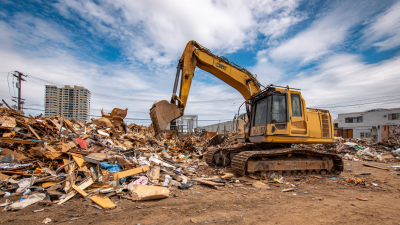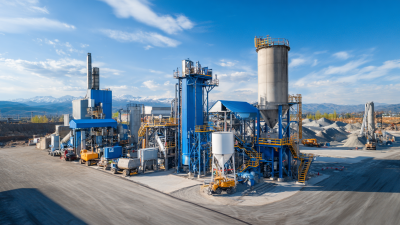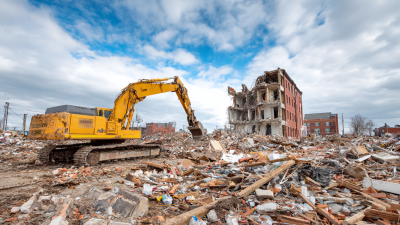Revolutionizing Construction: The Future of Concrete Machines and Their Impact on Building Efficiency
The construction industry is undergoing a transformative shift as advanced technologies rise to meet the growing demands for efficiency and sustainability. Among these innovations, concrete machines are playing a pivotal role in revolutionizing the building process.
According to a report by MarketsandMarkets, the global concrete machinery market is projected to reach $XX billion by 2025, growing at a CAGR of XX% from 2020. This surge is driven by the increasing adoption of automation and smart technologies that optimize construction workflows and reduce labor costs.
In a landscape where time and resource efficiency are paramount, concrete machines equipped with cutting-edge features can significantly enhance productivity, leading to quicker project turnaround times and improved quality of work.
As we explore the future of construction, it is crucial to understand the integral role concrete machines will play in shaping the industry’s efficiency and sustainability landscape.
Transforming Concrete Mixing: Advanced Technologies to Enhance Efficiency
The future of concrete mixing is being shaped by advanced technologies that significantly enhance efficiency and effectiveness on construction sites.
Traditional methods of concrete mixing often involve labor-intensive processes that can lead to inconsistencies in the final product. However, innovations such as automated mixing systems and precision batching technologies are transforming these practices. By utilizing these advanced machines, contractors can achieve accurate material ratios more consistently, thus improving the quality and durability of concrete structures.
Moreover, the integration of smart sensors and IoT (Internet of Things) technology in concrete mixing machines allows for real-time monitoring and adjustments. This capability not only streamlines the mixing process but also reduces waste by ensuring that only the necessary amount of materials is used. Ultimately, by adopting these cutting-edge solutions, the construction industry can enhance productivity, mitigate labor challenges, and contribute to sustainable practices, all while meeting the growing demand for efficient and resilient infrastructure.
Innovative Robotic Applications in Construction Machinery
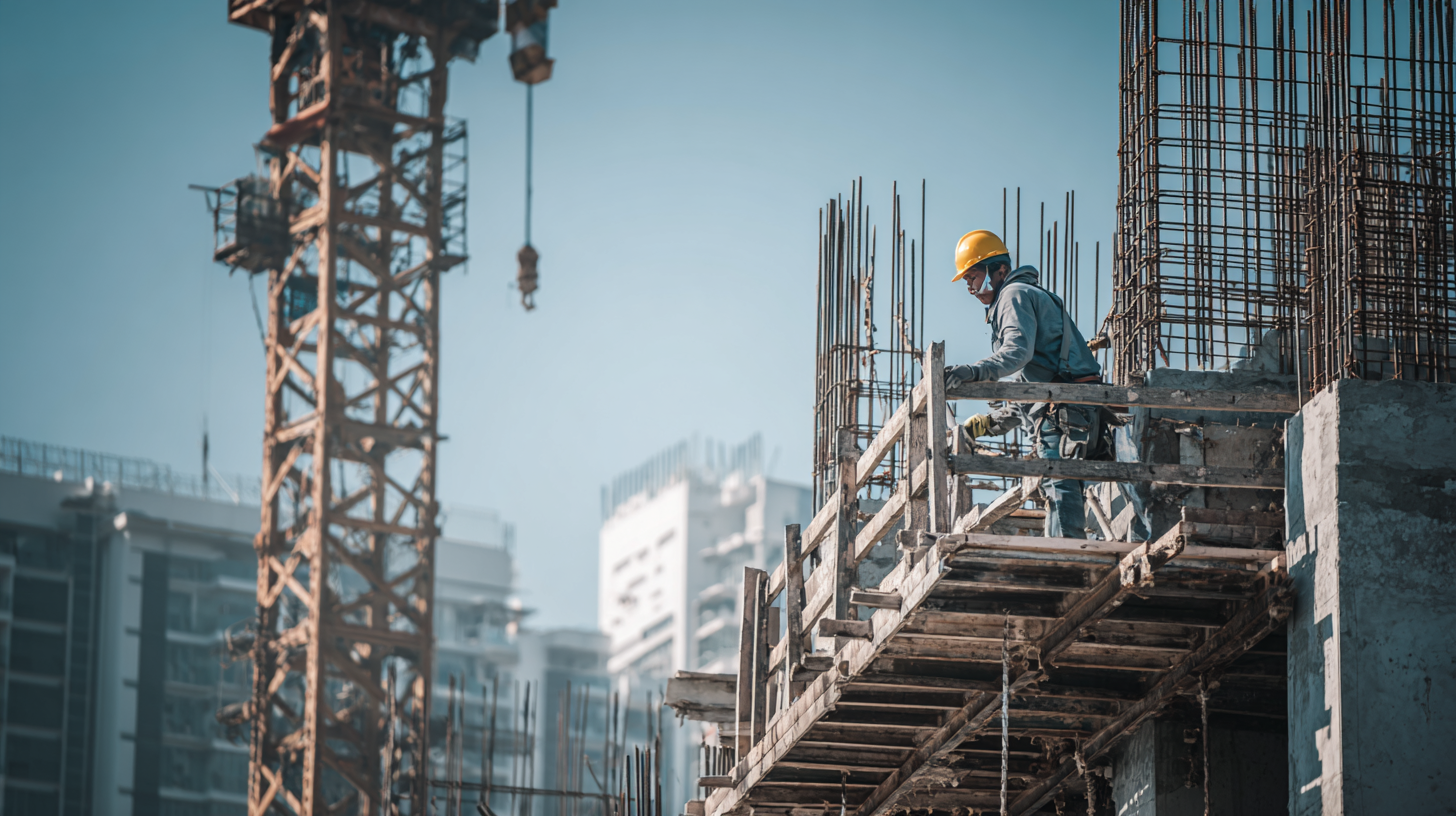 The construction industry is undergoing a transformative phase with the integration of innovative robotic applications that enhance efficiency and safety on job sites. Recent advancements in robotics have led to the development of machines capable of automating complex tasks, from bricklaying to painting. This automation not only speeds up the construction process but also addresses labor shortages that have long plagued the industry. Moreover, robotics in construction is increasingly being utilized in extreme environments, where human presence is risky. By leveraging AI and digital technologies, these machines can perform tasks in challenging conditions, ensuring both safety and structural integrity.
The construction industry is undergoing a transformative phase with the integration of innovative robotic applications that enhance efficiency and safety on job sites. Recent advancements in robotics have led to the development of machines capable of automating complex tasks, from bricklaying to painting. This automation not only speeds up the construction process but also addresses labor shortages that have long plagued the industry. Moreover, robotics in construction is increasingly being utilized in extreme environments, where human presence is risky. By leveraging AI and digital technologies, these machines can perform tasks in challenging conditions, ensuring both safety and structural integrity.
Furthermore, the emerging field of robotic assembly in construction promises to revolutionize traditional building methodologies. As the industry faces persistent challenges such as low productivity, robotic systems offer solutions that enhance quality and reduce material waste. The continued investment in research and development within construction robotics is indicative of a future where human-machine synergy will become the norm, enabling more sustainable and efficient building practices. The ongoing expansion of the construction robots market highlights the growing recognition of these technologies as essential tools for modern construction, paving the way for a smarter and more efficient industry.
Smart Automation: The Role of AI in Concrete Machinery
The integration of artificial intelligence (AI) in concrete machinery is setting new standards in building efficiency. Smart automation technologies not only streamline the construction process but also enhance precision during the mixing and pouring of concrete. AI algorithms analyze various parameters, such as temperature and humidity, to optimize the concrete's properties in real-time, ensuring that the right mix is used for different environmental conditions. This proactive approach minimizes waste and improves the overall quality of construction projects.
Moreover, AI-powered machinery can predict equipment failures before they occur, allowing for preventive maintenance. By leveraging data analytics, construction teams can optimize their workflows and reduce downtime, which is often a significant cost factor. The ability of AI to assess site conditions and manage logistics more effectively ensures that projects are completed on time and within budget. As the construction industry embraces these technological advancements, the role of AI in concrete machinery will continue to grow, fundamentally transforming how structures are built.
Revolutionizing Construction: The Future of Concrete Machines and Their Impact on Building Efficiency
This chart represents the efficiency improvements in construction due to smart automation and AI integration in concrete machinery over a five-year period. The data illustrates the percentage increase in productivity and reduction in operational costs.
Sustainable Practices: Eco-Friendly Concrete Machines for Future Construction
The construction industry is poised for a transformative shift towards sustainability, driven by the emergence of eco-friendly concrete machines. As waste marble emerges as a viable alternative in concrete production, it not only enhances compressive strength but also significantly reduces industrial waste. Utilizing machine learning to optimize the incorporation of such byproducts can revolutionize building practices, making them more environmentally responsible. This approach echoes the growing trend of sustainable materials, where the global concrete admixture market is projected to grow from USD 18 billion in 2025 to USD 33.2 billion by 2035, reflecting a compound annual growth rate (CAGR) of 6.3%.
Furthermore, the integration of advanced materials techniques, such as lightweight clay aggregates combined with slag and biomedical waste ash, paves the way for innovative self-compacting concrete solutions. Research shows that these developments are not just theoretical; they enhance the efficiency and sustainability of concrete mixes, reducing the need for extensive experimental trials. As construction demands adapt to urbanization, the focus on energy-efficient methodologies becomes paramount. The construction sector's growing adoption of technology and sustainable practices is anticipated to increase its real gross value added (GVA) to Rs 15.59 trillion by 2025, showcasing a robust growth trajectory reflective of changing industry priorities.
Revolutionizing Construction: The Future of Concrete Machines and Their Impact on Building Efficiency
| Machine Type |
Energy Efficiency (%) |
Emission Reduction (CO2 kg/ton) |
Recyclable Materials Used (%) |
Productivity Increase (%) |
| 3D Concrete Printer |
75 |
60 |
90 |
200 |
| Automated Mixing Machine |
85 |
50 |
80 |
150 |
| Eco-Friendly Concrete Mixer |
70 |
40 |
85 |
160 |
| Mobile Concrete Factories |
90 |
30 |
75 |
180 |
Integrating IoT: Connecting Construction Sites for Real-Time Monitoring and Efficiency
The integration of the Internet of Things (IoT) into construction is transforming the way sites operate, enabling real-time monitoring that enhances efficiency and decision-making. By equipping construction machinery and equipment with IoT sensors, stakeholders can gather crucial data on performance, resource usage, and environmental conditions. This connectivity allows for immediate adjustments, ensuring that projects stay on track and within budget.
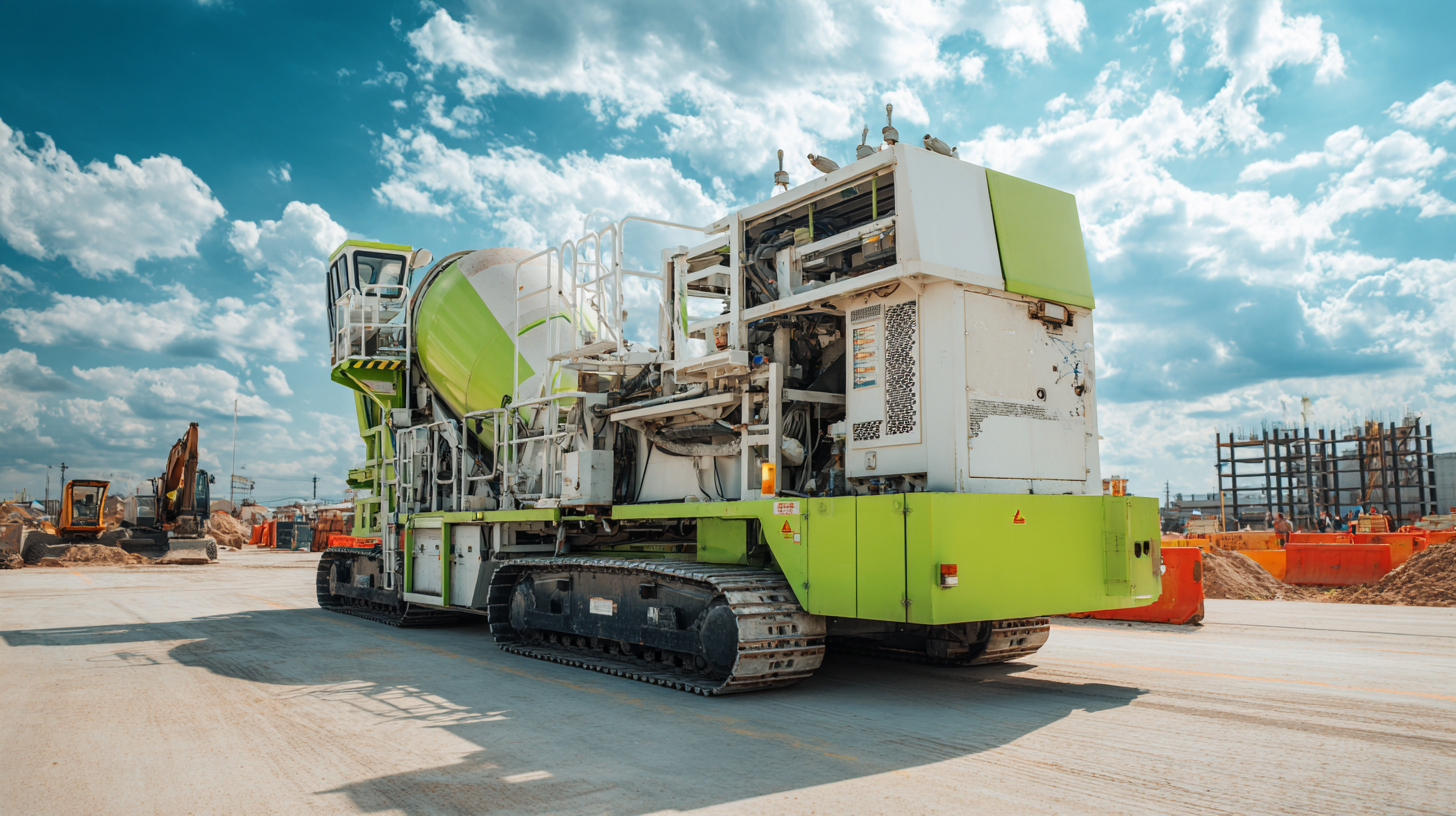
Furthermore, IoT connectivity fosters collaborative workflows among teams, as data can be shared seamlessly across devices and platforms. Project managers can monitor the status of tasks from anywhere, enabling quicker responses to unforeseen challenges. Real-time insights into material consumption and equipment health ensure that resources are used optimally, reducing waste and downtime. As the construction industry embraces these innovations, the future of building efficiency looks promising, paving the way for smarter, more sustainable construction practices.

Home
About Us
Products
 Concrete Mixing Plant
Concrete Mixing Plant
 HZS Series Belt Concrete Mixing Plant
HZS Series Belt Concrete Mixing Plant
 HZS Series Bucket-Lifting Type Container Concrete Mixing Plant
HZS Series Bucket-Lifting Type Container Concrete Mixing Plant
 HZS60 Mobile Concrete Mixing Plant
HZS60 Mobile Concrete Mixing Plant
 HZS Series Bucket-Lifting Type Concrete Mixing Plant
HZS Series Bucket-Lifting Type Concrete Mixing Plant
 HZS Series Mobile Concrete Mixing Plant
HZS Series Mobile Concrete Mixing Plant
 HZS Series Top-Mounted Concrete Mixing plant
HZS Series Top-Mounted Concrete Mixing plant
 HZS Series Semi-Top Mounted Concrete Mixing Plant
HZS Series Semi-Top Mounted Concrete Mixing Plant
 Stabilized Soil Mixing Plant
Stabilized Soil Mixing Plant
 Asphalt Mixing Plant
Asphalt Mixing Plant
 Sand & Gravel Crushing and Screening Plant
Sand & Gravel Crushing and Screening Plant
 RTPF350DS Crawler Mobile Impact Crushing Plant
RTPF350DS Crawler Mobile Impact Crushing Plant
 RT116JH Crawler Mobile Jaw Crushing Plant
RT116JH Crawler Mobile Jaw Crushing Plant
 RT116JE Crawler Mobile Jaw Crushing Plant
RT116JE Crawler Mobile Jaw Crushing Plant
 RT300CE Crawler Mobile Cone Crushing Plant
RT300CE Crawler Mobile Cone Crushing Plant
 RT300CH Crawler Mobile Cone Crushing Plant
RT300CH Crawler Mobile Cone Crushing Plant
 RT5015H Mobile Scalping Screen
RT5015H Mobile Scalping Screen
 RT315VSIE Crawler Mobile Sand Maker
RT315VSIE Crawler Mobile Sand Maker
 RT3YK6020 Crawler Mobile Screening Plant
RT3YK6020 Crawler Mobile Screening Plant
 RT3YK6020M Modular Screening Plant
RT3YK6020M Modular Screening Plant
 RTF260M Modular Counterattack Crushing and Screening Integrated Machine
RTF260M Modular Counterattack Crushing and Screening Integrated Machine
 RTF350M Modular Impact Crushing Plant
RTF350M Modular Impact Crushing Plant
 RTF450M Modular Impact Crushing Plant
RTF450M Modular Impact Crushing Plant
 Construction Waste Resourceful Treatment Line
Construction Waste Resourceful Treatment Line
Performances
Video
News
Blog
Contact Us
 WDB Series Foundation-Free Stability Soil Mixing Plant
WDB Series Foundation-Free Stability Soil Mixing Plant LCB Series Emulsified Asphalt Cold Regeneration Secondary Mixing Plant
LCB Series Emulsified Asphalt Cold Regeneration Secondary Mixing Plant LB Series Asphalt Mixing Plant
LB Series Asphalt Mixing Plant LBR Series Integrated Asphalt Mixing Plant
LBR Series Integrated Asphalt Mixing Plant LBRN Series Counterflow Integral Asphalt Mixing Plant
LBRN Series Counterflow Integral Asphalt Mixing Plant RZS Series Asphalt Mixing Plant
RZS Series Asphalt Mixing Plant RTZS120 Series RAP Crushing & Screening Plant
RTZS120 Series RAP Crushing & Screening Plant Construction Waste Resourceful Treatment Line
Construction Waste Resourceful Treatment Line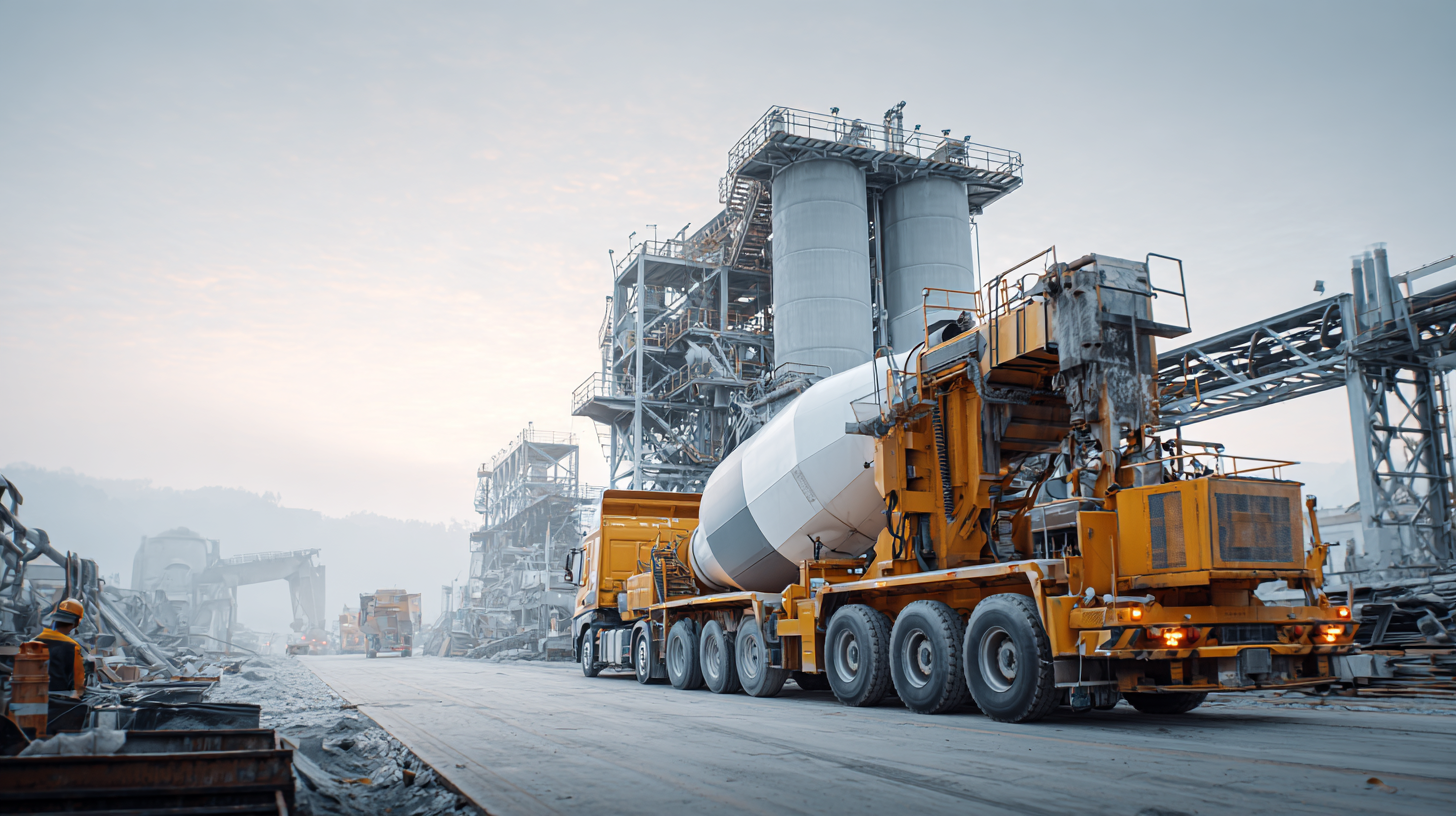
 The construction industry is undergoing a transformative phase with the integration of innovative robotic applications that enhance
The construction industry is undergoing a transformative phase with the integration of innovative robotic applications that enhance 

